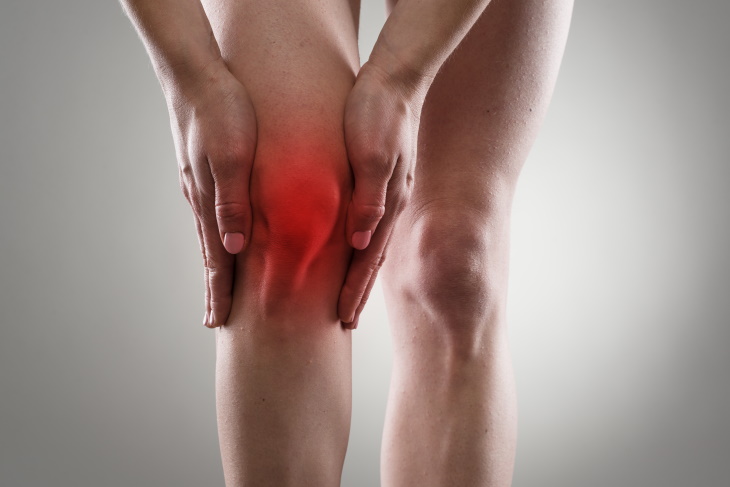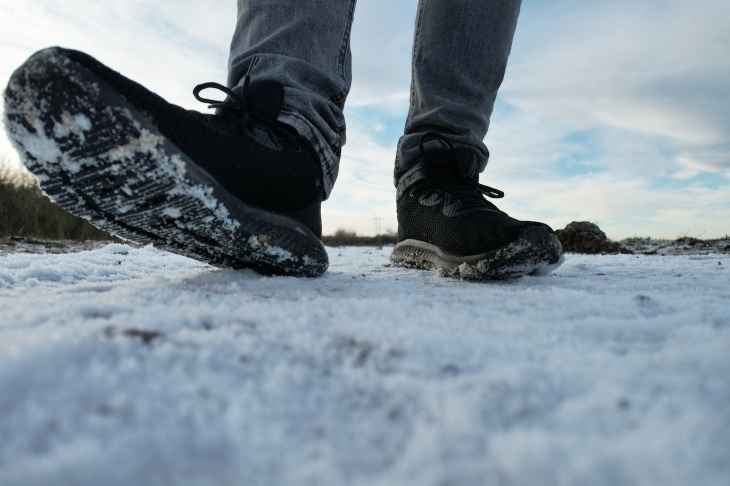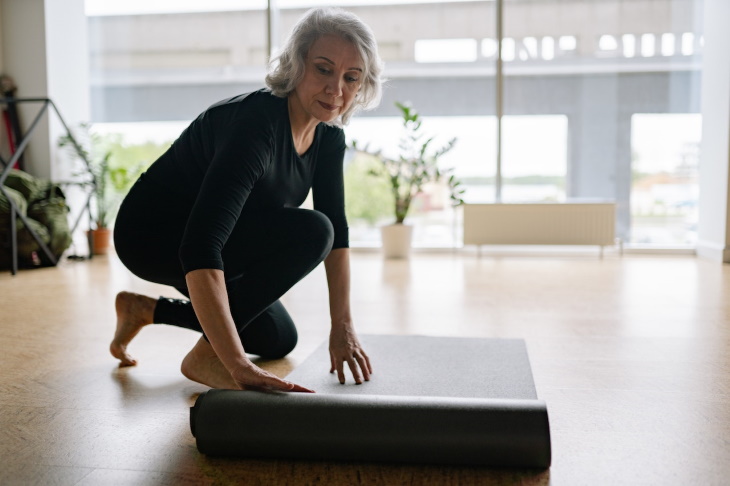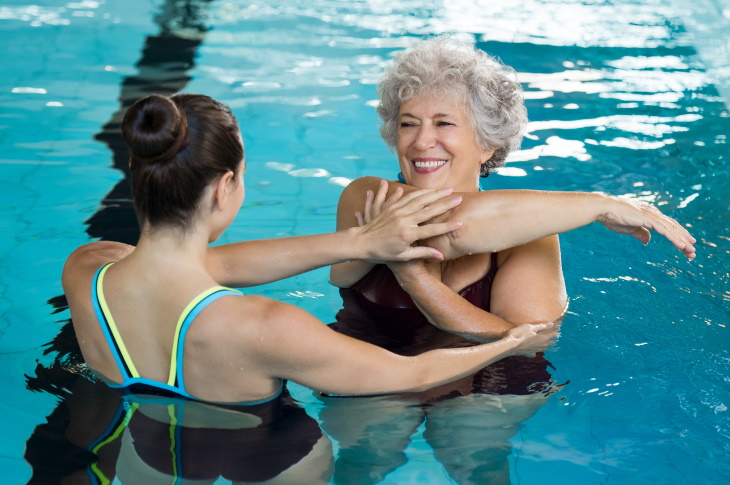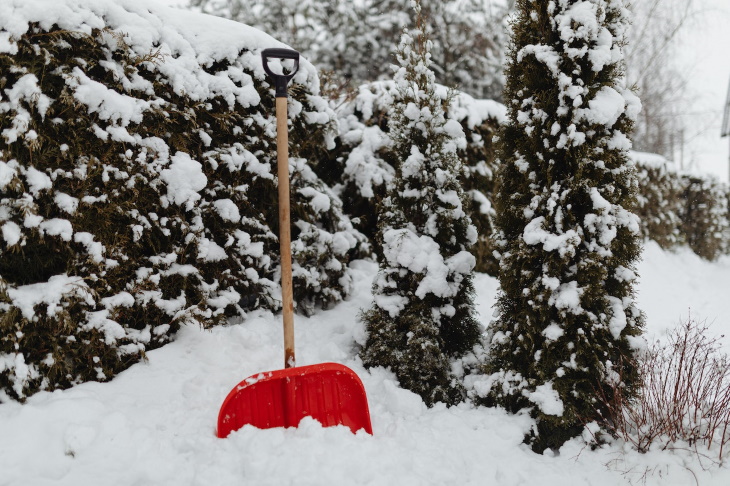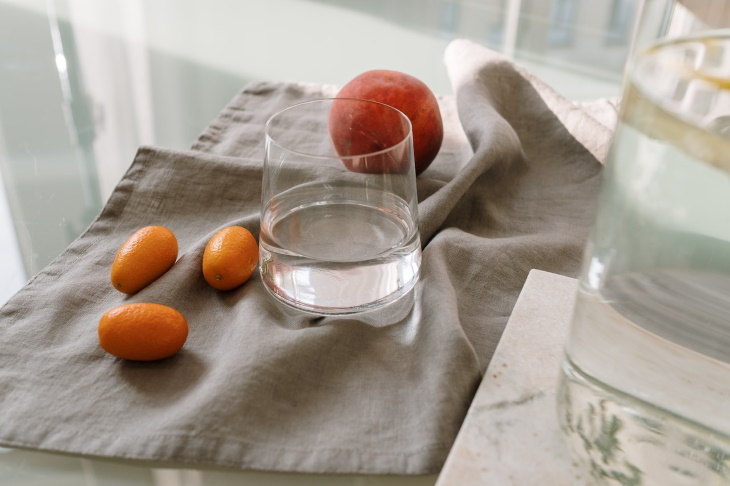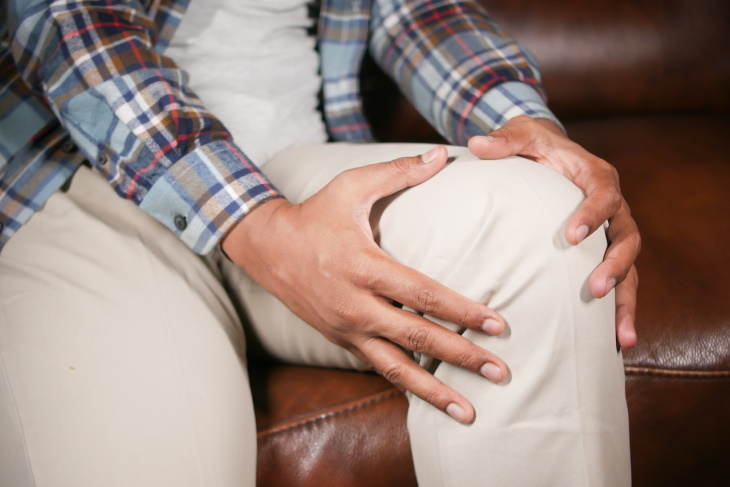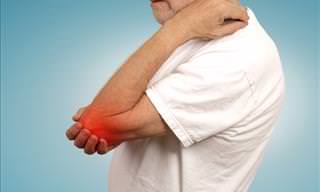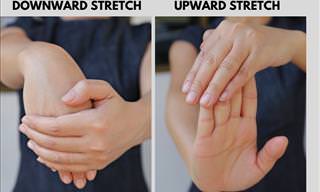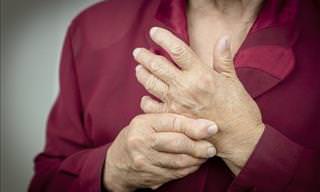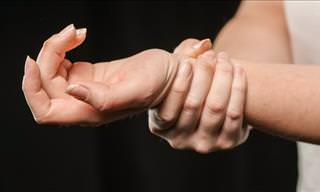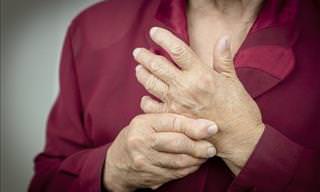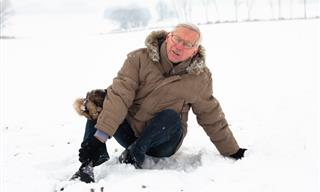How can cold weather aggravate arthritis?
We all know someone who swears they can predict shifts in weather by the pain in their joints. This phenomenon is no figment of their imagination. In fact, the Arthritis Foundation states that cold temperatures can seriously affect symptoms of arthritis.
Stiff and aching joints are a common predictor of cold weather, but researchers aren’t certain about the underlying cause of such flare-ups. According to one theory, it’s high humidity – especially in cold weather – that can worsen pain in older adults with osteoarthritis.
Another hypothesis states that any extreme change in temperature can aggravate symptoms of rheumatoid arthritis in older adults with the condition. "Our joints operate best in temperate weather," stated Dr. Mariko L. Ishimori, a rheumatologist at Cedars-Sinai. "When the weather gets cooler, the synovial fluid that acts like motor oil in our joints becomes more like sludge," she continued in the medical center’s blog.

Pain is not the only symptom made worse by winter weather. The cold contracts blood vessels and slows down blood circulation, and this, in turn, can lead to a spike in inflammatory compounds. As a result, a person with arthritis may experience more swelling, stiffness, and weakness in the joints than usual in cold weather.
The following lifestyle changes can greatly reduce or even completely prevent arthritic pain in the winter.
1. Wrap up warmly throughout the winter
One of the primary ways to reduce symptoms of arthritis in the winter is to keep joints warm. Don’t wait until you’re already feeling cold. Instead, be prepared by dressing in several warm layers to prevent getting cold altogether. This applies both indoors and outdoors.
As a general rule, 2-3 thin layers provide more warmth than a single thick layer. It is also infinitely customizable, as it allows you to remove one layer when going indoors and still be warm, for example. Bundle up in a fuzzy blanket or use heating pads and room heaters when you’re at home.
When you’re preparing to go outdoors, don’t forget to wear warm socks, a hat, gloves, a scarf, and a warm overcoat. The focus should always be on the areas affected by arthritis: usually the hands, knees, and legs. In cold climates, that may mean wearing two layers of gloves and socks, tights, and knee warmers.
Related article: The MOST Common Types of Arthritis and How They Differ
2. Choose the right footwear
The human body loses most heat through the head, feet, and hands. Hence, wearing the right shoes in the winter is extremely helpful for everyone – not just people with arthritis. That being said, arthritis sufferers ought to pay even more attention to the footwear they choose for winter, as the legs and feet are often their biggest problem areas.
Your shoes should serve three equally critical functions:
- They must have a strong grip to prevent falls – non-skid soles are the most reliable.
- There should be enough lining to keep the feet warm.
- They should be waterproof to keep your feet dry.
It’s also better if your winter boots are lightweight and have proper ankle support. Pull-on boots are the easiest to put on and take off. The Canadian Arthritis Society also recommends replacing the tips on a cane or a walker if you use it as a mobility aid.
3. Opt for indoor exercise
Physical activity is a must for managing arthritic pain all year round, as regular exercise is scientifically proven to reduce joint pain. However, staying active can be more challenging in the wintertime, especially if your exercise of choice is of the outdoorsy kind.
At subzero temperatures, it is recommended that you spend less time outside altogether if you have arthritis. In place of your usual exercise routine, opt for indoor activities. The simplest option would be gentle stretching. You could follow an arthritis-friendly yoga routine, or do simple exercises, like bending and straightening the knees, stretching your shoulders, or rolling the wrists. These types of exercises relax the muscles and reduce joint stiffness.
However, any other activity – be it walking on a treadmill or vacuuming the house – will be beneficial too.
Related article: 4 Simple Hand Exercises to Alleviate Arthritis Pain
4. Hydrotherapy
Warm water is the easiest way to reduce joint pain brought about by low temperatures. Hot water bottles are a portable option. When your joints feel tender and painful, fill the bottle with hot water, and then hold it over the joints.
In addition, the Arthritis Foundation recommends taking a warm bath with or without Epsom salt to warm up the body after a day spent in the cold. Just make sure that you let your body temperature normalize before you go outdoors.
If you’d like to do even more than that, try swimming in a heated pool. Hydrotherapy, or the use of warm water for pain relief and treatment, soothes the joints and increases their mobility. To get the most out of your trips to the pool, you can do gentle movements and exercises while you’re in the water. Your doctor or psychotherapist will be able to recommend the most appropriate sequence of water exercises for you.
5. Indulge in a massage
Are warm baths and swimming lessons not your jam? Another pleasant way to reduce arthritis pain is through a weekly massage. Since a lot of pain is caused by muscle spasms that pull at the joint, relaxing the stiff muscles with the help of a therapeutic massage can help soothe the pain.
6. Stay safe outdoors
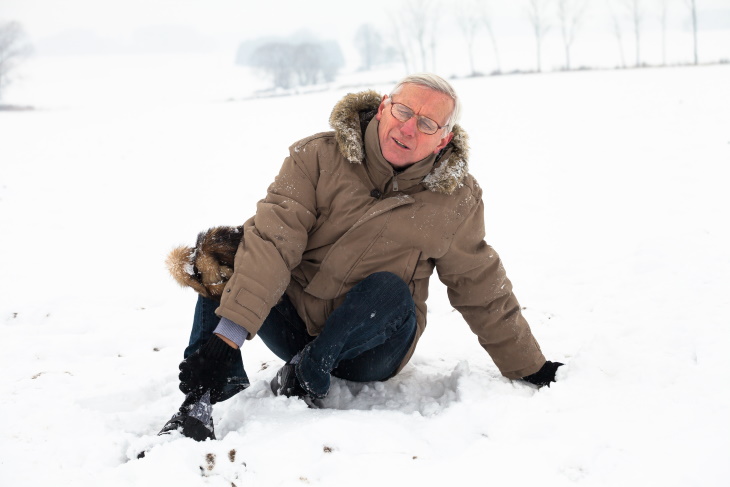
Folks with arthritis should take extra precautions to stay safe outside in the winter. Many people with arthritis have an altered perception of the cold due to reduced circulation or nerve issues. For this reason, they have a higher risk of the following:
- Hypothermia – a life-threatening condition when someone is exposed to low temperatures and this causes one’s body temperature to fall below 95°F (35°C). Confusion, a weak pulse, shallow breathing, slurred speech, and loss of consciousness are all signs of hypothermia. A person experiencing hypothermia needs urgent medical attention. For more emergency guidelines, go here – How to Act in 10 Different Medical Emergencies.
- Frostbite – the freezing of skin tissue when the body is exposed to extremely cold weather. The skin may be covered in blisters, and the fingers, toes, and nose may look blue or black. The affected skin areas may also lose sensation. Frostbites are also a medical emergency.
- Frozen fingers – the fingers are covered with red spots and look swollen after being exposed to extremely low temperatures. This is not an emergency, but it can be extremely painful, especially for folks with arthritis. To speed up the recovery, move the person indoors and dip their fingers in lukewarm water. Do NOT use warm or hot water, and don’t let the affected person rub their fingers.
All of these conditions are serious to potentially life-threatening, so please take care and avoid spending too much time outdoors, especially if you have arthritis.
7. Be super careful when you shovel snow
If you have any joint issues, every attempt at removing ice and snow becomes a game of Russian roulette. You may do just fine, or you may get injured. There’s also the increased risk of falls and heart attacks, which is a huge concern for anyone but especially people with arthritis. Therefore, it’s best if someone helps you with this task instead.
However, this is not always possible, and some people must do the snow-blowing or shoveling on their own. If that is you, we highly recommend reading our guide on the proper shoveling technique and tips for how to shovel safely. Remember, this is a strenuous activity that should not be taken lightly. Wear protective clothing and shoes with extra grip, and take frequent breaks when you have to clear the path.
8. Create a safe environment at home
Stiff and achy joints and muscles increase one’s risk of falling. If you’re prone to winter flare-ups of arthritis, it’s paramount to remove all home hazards. To avoid injuring yourself at home, consider the following adjustments:
- Clear the floor of tripping and slipping risks, including cords, slippery tiles, small objects, and skidding rugs and runners. Alternatively, you can secure all the floor coverings with rubber backing.
- Place items that are frequently used in easy-to-reach places.
- Don’t move in a rush – rushing is a major cause of falls. Develop the habit of moving mindfully and slowing down if you see yourself rushing somewhere.
- Sit down when you’re putting on clothes and shoes.
- Install mobility aids, such as grab bars in the bathroom and a railing near the bed.
- Make sure that all the areas in your home and yard paths are well-lit, and everything, including the floor, is easily visible.
9. Drink plenty of water
Even though it may sound unrelated at first, drinking water can also have a beneficial effect on your joints. When we are dehydrated, we are more sensitive to the perception of pain – says a research paper from 2015. Thus, consuming more water can help you reduce pain and be healthier overall.
That being said, it’s quite common to reduce one’s fluid intake in the winter. If you struggle with drinking enough water in the colder months, consider herbal teas or flavored water with ginger, lemon, or other fruits.
10. Get your diet right

We’re all feeling the aftermath of the holidays on our bodies. Folks with rheumatoid arthritis, in particular, are prone to flare-ups when they’re a bit too heavy-handed with the holiday menu.
Heavy and sweet foods and beverages, such as cakes and pastries, processed meats, alcohol, and sauces are the main culprits. These foods have been shown in studies to increase the levels of inflammation in the body.
If you know that your joints are stiffer and achier during wintertime, focus on maintaining a balanced diet. Try to include plenty of fruits, vegetables, fish, yogurt, and eggs in your diet every day.
The specific nutrients beneficial for arthritis are:
- Vitamin D: Low levels of this vitamin make you more sensitive to joint pain, says a 2015 study. When you reach the age of 60, increasing your intake of vitamin D is a must, as it also reduces the risk of osteoporosis. Since sunlight may be more scarce in the winter, eat more foods containing this vitamin, such as fatty fish, liver, and fortified foods.
- Vitamin B12 lowers homocysteine levels. This is an amino acid associated with inflammation and an increased risk of cardiovascular issues. People with rheumatoid arthritis have higher levels of it than the general population. Foods that contain B12 are fish, eggs, beef, and yogurt.
- Vitamin B6 reduces inflammation. A study from 2003 found that rheumatoid arthritis patients tend to have lower levels of this vitamin. Spinach, bananas, carrots, and sweet potatoes all provide this vitamin.
- Omega 3 fatty acids help lower inflammation and swelling in the joints. Fatty fish, avocados, soy, beans, nuts, and seeds will help you boost levels of this nutrient.
Related article: These Foods Can Help Fight the Effects of Arthritis
At what point should you seek medical help?
Since arthritis is a chronic condition that you’re likely already treating, it may be tough to know when it’s time to reach out to a professional for help. If you’re experiencing a winter flareup, and the arthritis pain is becoming unmanageable, seek professional help. A doctor will be able to prescribe any necessary supplements, pain medication, physiotherapy, and additional lifestyle changes to reduce your symptoms and prevent complications.
Do not hesitate to seek outside help whenever you need it – be it from your family and close circle or a medical professional.
References: Arthritis Foundation, Cedars-Sinai Blog, Arthritis Society Canada, Everyday Health, Bezzyra.com
 Go to BabaMail
Go to BabaMail


